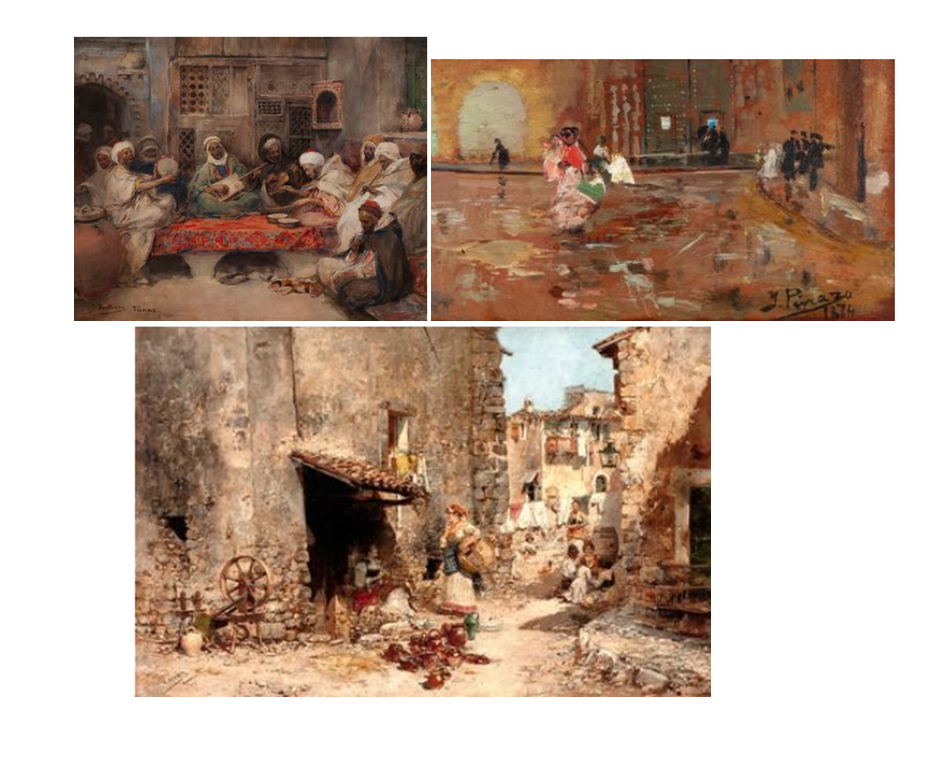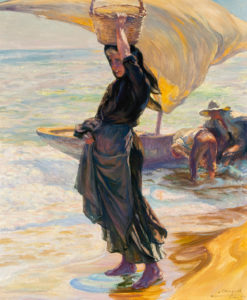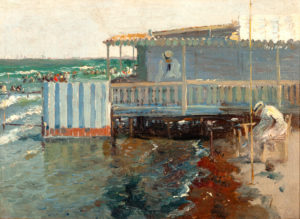The luminism of the Valencian school is rekindled in Setdart.
Valencian art experienced a golden age from the second half of the 19th century in which Joaquín Sorolla and his contemporaries began the well-known Valencian luminism. To this prolific current, a whole generation of artists is attached who, as inheritors of the traits and values of this style, sought in the typical settings of Levantine manners the kinder reality of life. The so-called “New golden century of Valencian painting” finds in our auction on April 15 a magnificent representation that, from the hand of his great figures, comes to show us the indelible mark they left behind in Spanish art.
Throughout the 19th century, Valencian painting underwent a paradigm shift in which the romantic and neoclassical conception prevailing so far, gave way to a vision closer to the realistic trend developed outside our borders. Likewise, the novelties of the pictorial language will lead to a renewal of the thematic repertoire, whose diversification responds to a great extent to the desire to satisfy the demand of the demanding bourgeois clientele. In this way, historicist and religious painting will lose its hegemony in favor of the costumbrista and orientalist side, represented here through the eyes of its greatest exponents. José Benlliure (35186289), Pinazo (35158388) or Vicente March (35190833) gave free rein to their most luminous and spontaneous compositions in which the taste for the exotic and the own were developed alongside true virtuosity.

Likewise, the emergence of Luminism as an alternative to academic restraint, definitively consolidated the modernization of pictorial practice in late-century Spanish art. The instantaneous and luminous capture of the forms built with a loose and pulsating brushstroke, was the common denominator of these artists born in the Levant, who despite being linked to the conservative tradition of their academic training, approached the groundbreaking precepts of Impressionism French. However, the Valencian Luminists, less daring than Monet and his counterparts, opted for a language linked even to the pictorial tradition that extols the value of the line.
Joaquín Sorolla, the most international of all Valencian artists, achieved resounding success with his captivating images of the Mediterranean. His ability to capture the vitality of a fleeting moment shines through in works that, like the one we are dealing with here, show us the most revolutionary Sorolla. In this small tablet, the artist illustrates his mastery of writing, concentrating in a small space, the purest and vivid vibration of light and color of the Valencian beaches.
The important impact from Sorolla is reflected in artists like José Mongrell (35111762) reached a level of excellence far beyond the simplistic considerations that reduce them to mere disciples. In this sense, the artist will absorb the teachings of his predecessors without losing that more classical and disciplined character that will give him his own identity. Mongrell’s landscapes, worked with real care, become the ideal setting to show the dignity of common characters who, carrying out their daily chores, stand as true heroes of modernity. The solidity of its protagonists, combined with the warmth of its palette and the agility of its brushstroke, transports us to the most intimate and vital vision of Valencian manners, overflowing as always, of the hypnotic luminosity of the Mediterranean.
Concluding this tour, it is worth stopping at this small canvas by the painter Navarro Llorens (35190842) who, despite the influence of Levantine luminism, always manifested himself with a deeply personal imprint. In his brushes, the figures executed with a more pronounced freedom of invoice than that of their predecessors, merge between beautiful chromatic transparencies with the sparkling clarity of an environment where light acquires a plastic and even tactile value.




